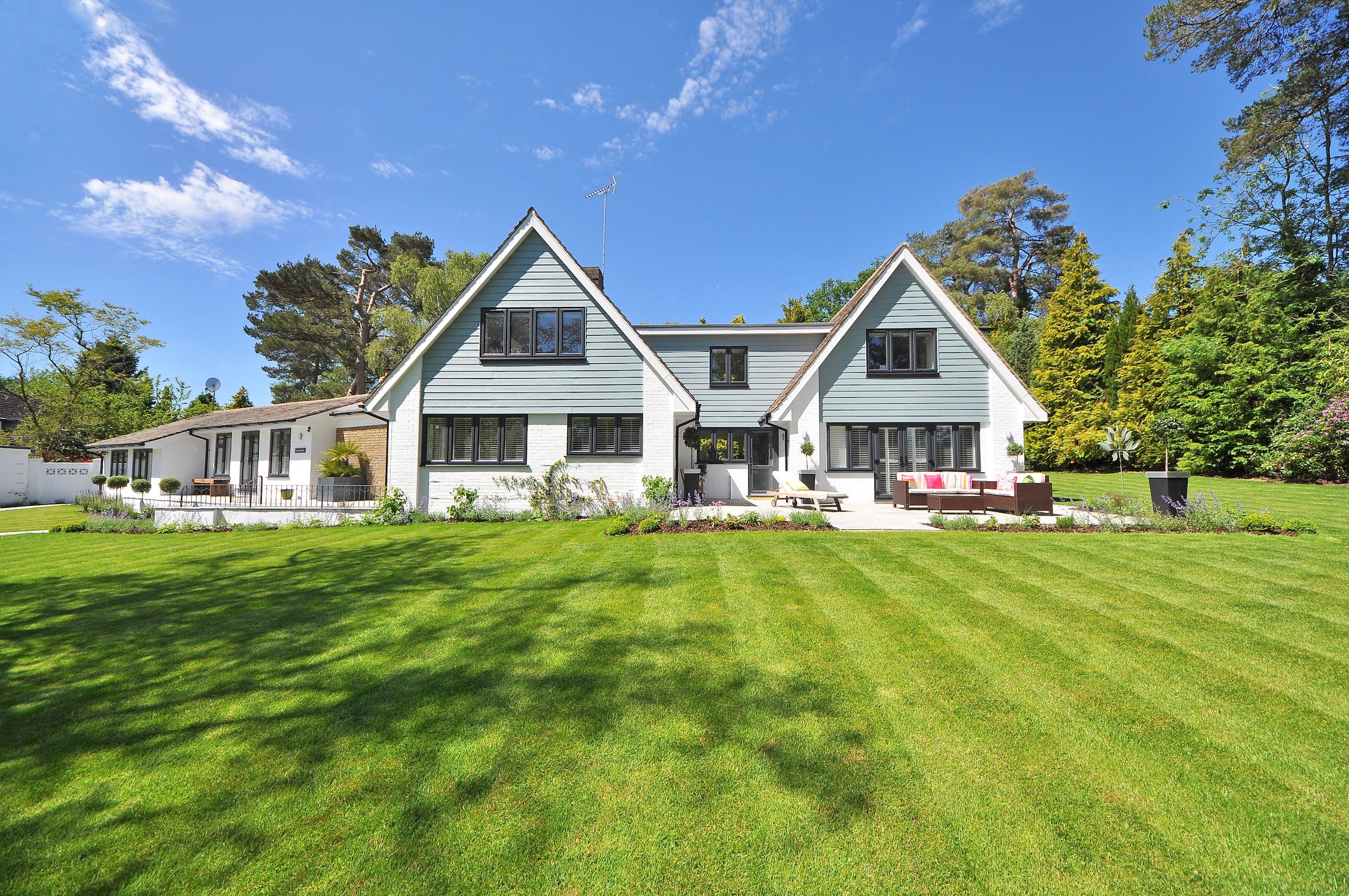10 Essential Landscaping Tips for a Beautiful Outdoor Space
by siteadmin

Creating a captivating and well-designed outdoor space can greatly enhance the beauty and functionality of your home. Whether you're a gardening enthusiast or a novice looking to improve your landscape, these ten essential landscaping tips will help you transform your outdoor area into a stunning oasis. From careful planning to incorporating native plants, embracing hardscaping elements, and implementing sustainable practices, this article provides valuable insights to help you create a beautiful and harmonious landscape that reflects your style and preferences.
1. Planning is Key
Before diving into your landscaping project, take the time to plan and visualize your desired outcome. Start by assessing your outdoor space and considering factors such as sunlight exposure, soil conditions, and the overall style you want to achieve. Create a rough sketch or use landscaping software to map out your ideas. This planning phase will help you determine the layout, the types of plants you want to include, and any hardscaping elements you may want to incorporate. By having a clear plan in place, you can save time, money, and effort during the implementation stage.
2. Focus on the Foundation
Building a solid foundation is crucial for a successful landscaping project. Start by assessing the quality of your soil. Soil health plays a vital role in the growth and overall health of your plants. Conduct a soil test to determine its pH level and nutrient content. Based on the results, you may need to amend the soil with organic matter or specific fertilizers to create an optimal growing environment. Improving the soil quality will provide a strong base for plants to thrive and will contribute to the long-term success of your landscape.
3. Incorporate Native Plants
Choosing the right plants is essential for a successful landscape. Native plants, which are naturally occurring in your region, are well-adapted to the local climate, soil conditions, and pests. They tend to require less maintenance and are more likely to flourish in their natural environment. Native plants also support local ecosystems by attracting native pollinators and wildlife. Research and select native plants that are suitable for your specific climate and soil type. Consider factors such as their growth habits, water requirements, and visual appeal. By incorporating native plants into your landscape, you can create a sustainable and low-maintenance garden that blends harmoniously with the surrounding environment.
4. Create Layers
Adding depth and visual interest to your landscape is important for creating an eye-catching design. One effective way to achieve this is by incorporating plants of varying heights and textures. Start by considering the different layers in your garden. The tallest layer typically consists of trees and tall shrubs, providing a canopy or backdrop. The middle layer includes medium-sized shrubs and ornamental grasses, while the lowest layer features ground covers and low-growing plants. By strategically placing plants in these layers, you can create a more dynamic and visually appealing garden. Vary the colors, textures, and shapes of the plants to add further interest and create a balanced composition.
5. Consider Seasonal Interest
A well-planned landscape should provide year-round appeal. Consider incorporating plants that offer different colors, textures, and blooms throughout the seasons. Select plants with early spring flowers, vibrant summer foliage, and stunning fall colors. Additionally, choose plants that provide visual interest during the winter months, such as evergreen shrubs or trees with interesting bark. By selecting a variety of plants that showcase their beauty at different times of the year, you can ensure that your landscape remains visually appealing and engaging throughout all seasons.
6. Embrace Hardscaping
Incorporating hardscape elements can add structure, functionality, and visual interest to your landscape. Hardscaping refers to the use of non-living elements such as paths, patios, retaining walls, and water features. These elements can help define different areas within your outdoor space and create a sense of unity. When selecting hardscape materials, consider the overall style and aesthetics of your home and landscape. Choose materials that complement your existing architecture and blend harmoniously with the natural surroundings. Hardscaping also provides opportunities to create focal points or gathering areas within your garden, such as a cozy seating area or a stunning water feature.
7. Incorporate Water Features
Water features can add a sense of tranquility and serve as a focal point in your outdoor space. Whether it's a small pond, a soothing fountain, or a cascading waterfall, water features can create a relaxing atmosphere and attract wildlife. Consider the size and scale of your landscape when choosing a water feature. Smaller gardens may benefit from a compact fountain or a decorative birdbath, while larger landscapes can accommodate more extensive water features. Incorporate water-loving plants around the water feature to enhance its beauty and create a natural look. It's important to consider maintenance requirements when adding a water feature, as regular cleaning and proper water circulation are necessary to keep the feature in good condition.
8. Pay Attention to Lighting
Outdoor lighting is an essential element in landscape design, as it enhances the ambiance and functionality of your outdoor space. Well-placed lights can highlight key features, create focal points, and extend the usability of your landscape into the evening hours. Start by identifying areas that could benefit from lighting, such as paths, patios, and architectural elements. Consider the different types of lighting available, such as pathway lights, spotlights, and accent lights. Opt for energy-efficient LED lights, which provide a warm and inviting glow while reducing energy consumption. Lighting not only adds beauty to your landscape but also improves safety and security by illuminating potential hazards and deterring intruders.
9. Maintain a Sustainable Landscape
Creating a sustainable landscape is not only beneficial for the environment but also for the long-term health and maintenance of your garden. Implementing eco-friendly practices can conserve water, reduce chemical usage, and support biodiversity. Consider installing a water-efficient irrigation system, such as drip irrigation or a smart controller that adjusts watering based on weather conditions. This helps to minimize water waste and ensures that plants receive adequate hydration. Use organic fertilizers and compost to nourish your plants, promoting healthy growth without introducing harmful chemicals into the ecosystem. Implement mulching techniques to conserve moisture, suppress weeds, and improve soil health. Additionally, consider incorporating native plants, as mentioned earlier, to support local ecosystems and reduce the need for excessive watering and chemical inputs.
10. Regular Maintenance
Regular maintenance is essential to keep your landscape looking its best. Develop a maintenance routine that includes tasks such as pruning, weeding, fertilizing, and regular watering. Pruning helps maintain the shape and health of your plants, while weeding prevents unwanted plants from competing with your desired vegetation. Fertilize your plants according to their specific needs and monitor their water requirements to prevent over or under watering. Remove any debris or fallen leaves regularly to keep your garden clean and tidy. Regularly inspect your landscape for signs of pests or diseases, and take appropriate action to mitigate any issues. By dedicating time to ongoing maintenance, you can ensure that your landscape remains healthy, vibrant, and visually appealing throughout the year.
Conclusion
By following these ten essential landscaping tips, you can create a beautiful and harmonious outdoor space that enhances the aesthetic appeal and value of your property. From careful planning and focusing on the foundation to incorporating native plants, embracing hardscaping elements, and implementing sustainable practices, these tips provide a solid foundation for your landscaping journey. Remember, landscaping is a creative process, so feel free to experiment and personalize your design to reflect your style and preferences. With dedication and care, you can transform your outdoor area into a stunning oasis that you can enjoy for years to come.
https://www.armadalegardenlandscaper.com.au/
Creating a captivating and well-designed outdoor space can greatly enhance the beauty and functionality of your home. Whether you're a gardening enthusiast or a novice looking to improve your landscape, these ten essential landscaping tips will help you transform your outdoor area into a stunning oasis. From careful planning to incorporating native plants, embracing hardscaping…
Recent Posts
- Stokes Tree Solutions, LLC Releases Comprehensive Guide to Safe Tree Removal in Fairfax, VA
- Landscaping Corpus Christi: Your One-Stop Solution for Superior Landscape Design and Lawn Care Services
- Prime Cut Lawn & Landscaping: Landscaper in Kentucky, Burlington, Florence
- How to Build Stone Walls
- How Do I Keep My Lawn Green?
